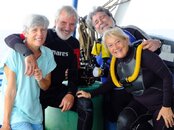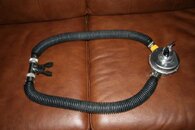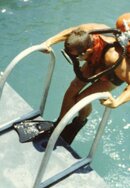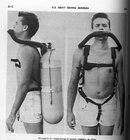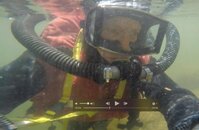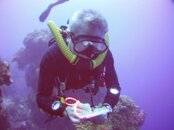My point, the Kraken, as regulators go of any type, is a very quiet breathing machine. But to compare to a CCR which neither has an inhalation Venturi assist or exhaled free bubbles, that will be quite the trick. Can it be improved upon over the noise level now, yes, I think so.....Nemrod
We ran across some information done by the French Navy early in the development of the double hose outlining their ideas and concepts to silence the regulator. Some were pretty outrageous and looked like Rube Goldberg contraptions. Others seemed to have promise and will be worth further investigation.
The focus now is to complete the long anticipated DSV style mouthpiece for the Argonaut. Adding it will solidify the identity of the regulator and further increase it's performance potential. The trials and tribulations of this are covered pretty extensively like a soap opera in the Argonaut section of the VDH Forum.
As with most projects Luis is at the drawing board, I'm trying to turn the red side of the ledger into black and Herman is in his workshop cursing both of us :laughing:
We ran across some information done by the French Navy early in the development of the double hose outlining their ideas and concepts to silence the regulator. Some were pretty outrageous and looked like Rube Goldberg contraptions. Others seemed to have promise and will be worth further investigation.
The focus now is to complete the long anticipated DSV style mouthpiece for the Argonaut. Adding it will solidify the identity of the regulator and further increase it's performance potential. The trials and tribulations of this are covered pretty extensively like a soap opera in the Argonaut section of the VDH Forum.
As with most projects Luis is at the drawing board, I'm trying to turn the red side of the ledger into black and Herman is in his workshop cursing both of us :laughing:




